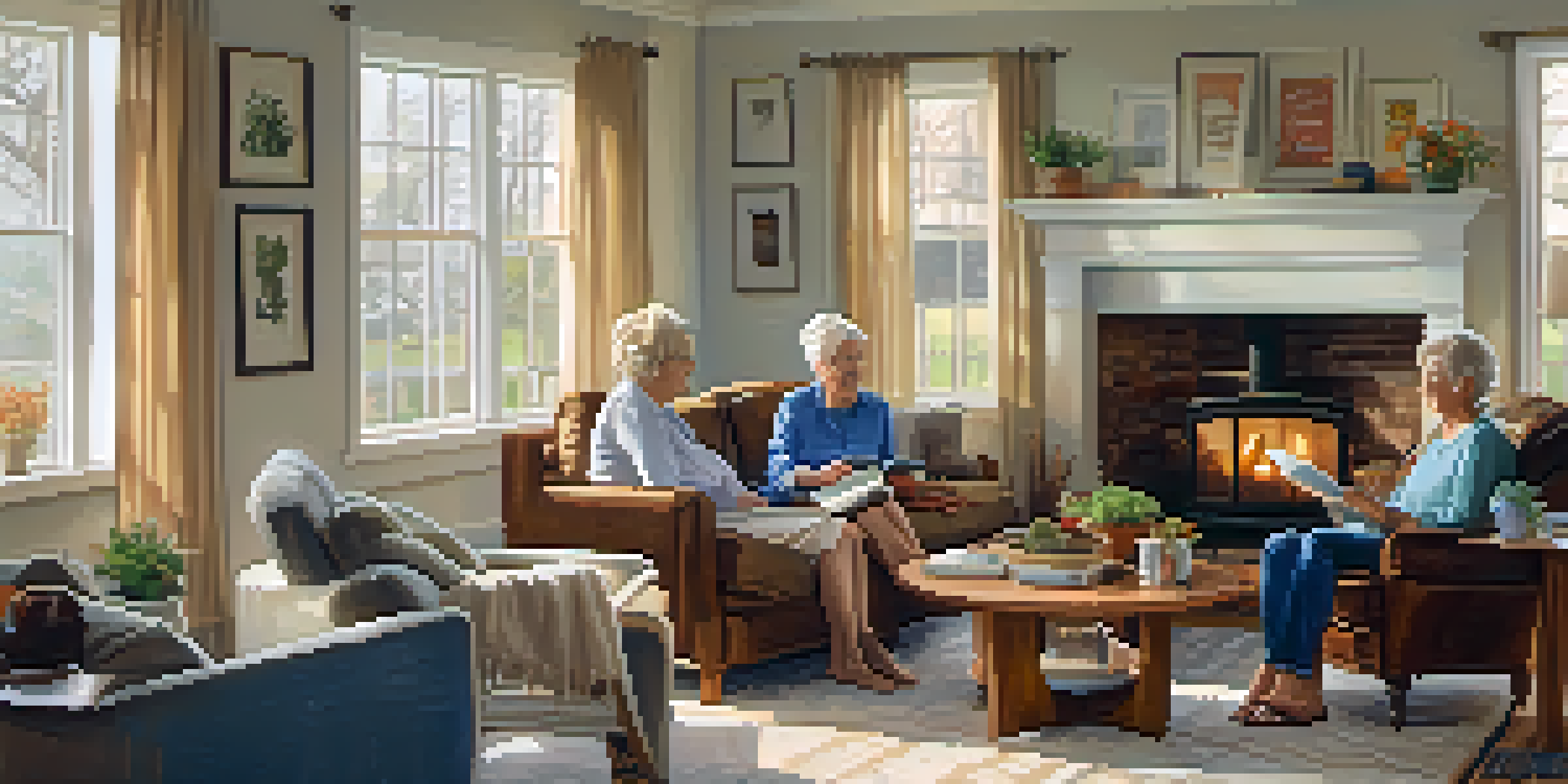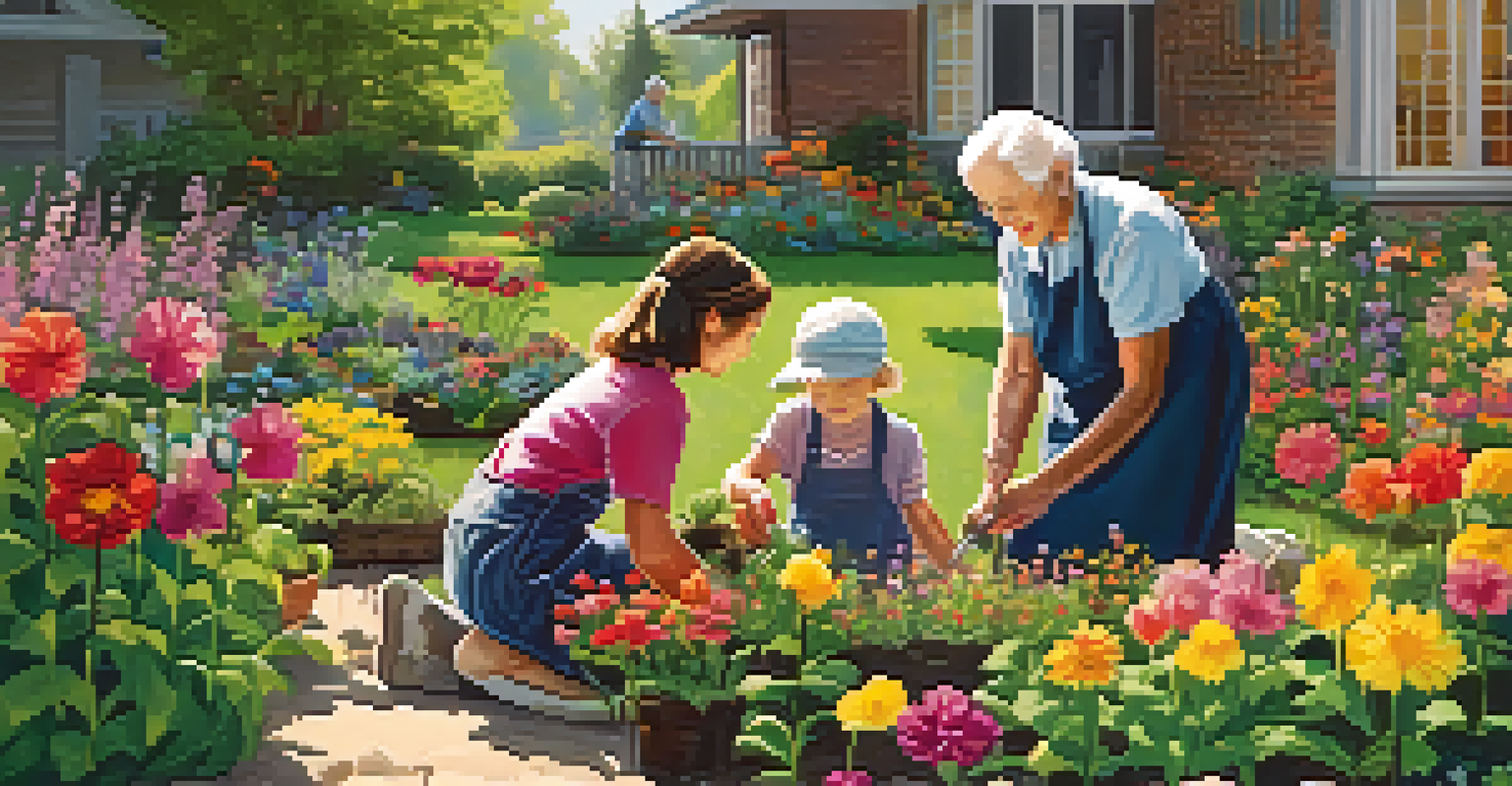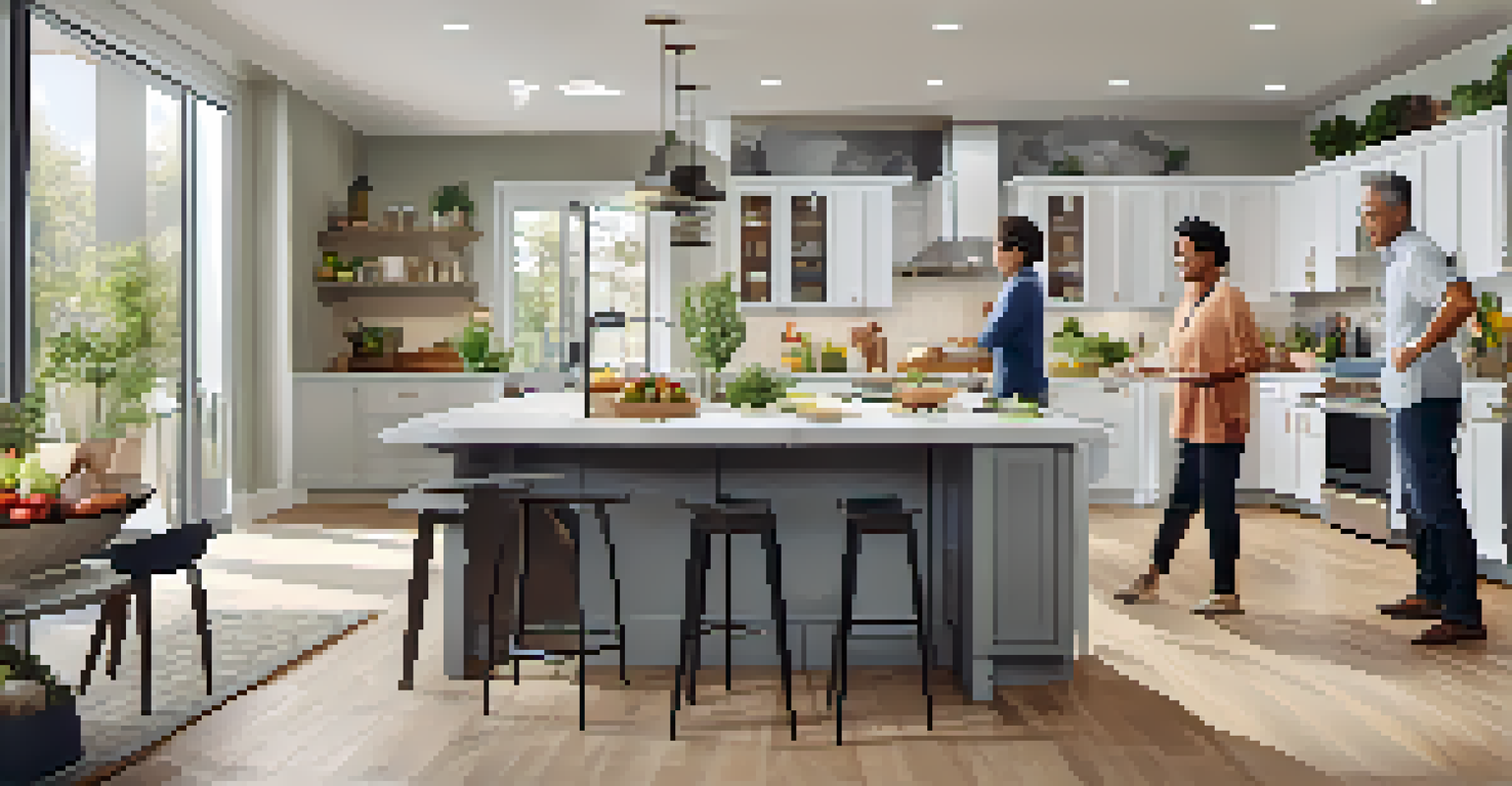Analyzing the Shift Towards Multi-Generational Living in Denver

Understanding Multi-Generational Living in Denver
Multi-generational living refers to households that include more than two generations under one roof. In Denver, this trend is becoming increasingly popular due to various social and economic factors. Families are finding that living together can provide both financial and emotional support, creating a more cohesive family unit.
Family is not an important thing, it's everything.
The concept isn't just about sharing a home; it’s about sharing responsibilities, childcare, and resources. With rising housing costs, many families are opting for this arrangement to alleviate financial burdens. This can also foster stronger family bonds, as members spend more time together in daily life.
As more people recognize the benefits of this lifestyle, we see a shift in how homes are designed and marketed. Developers are starting to create properties that cater specifically to multi-generational needs, offering flexible spaces that can accommodate a variety of family dynamics.
Economic Factors Driving the Trend
One of the most significant factors contributing to the rise of multi-generational living is the soaring cost of housing in Denver. With home prices and rent on the rise, many families are seeking ways to make living expenses more manageable. Sharing a home can significantly cut costs, making it an attractive option for many.

Additionally, the financial impact of caring for elderly relatives is prompting younger generations to consider this living arrangement. By combining resources, families can provide better care for their loved ones while also easing the financial strain on individual members. This shared responsibility can lead to a better quality of life for everyone involved.
Rising Costs Fuel Co-Habitation
The soaring housing costs in Denver are prompting families to adopt multi-generational living to ease financial burdens.
Moreover, the current economic climate has led to increased job instability and unpredictable income. Families are turning to multi-generational living as a way to create a safety net, pooling their resources to navigate economic challenges together. This trend reflects a broader shift towards community and shared living.
Cultural Shifts Supporting Co-Habitation
Cultural attitudes toward family dynamics are evolving, particularly in urban settings like Denver. Many younger adults are embracing the idea of living with their parents or grandparents, seeing it as a way to strengthen familial ties. This shift in perception helps normalize what was once considered an unconventional lifestyle.
The strength of a nation derives from the integrity of the home.
In many cultures, multi-generational living has long been the norm, and now we're seeing a resurgence of this practice in American society. People are increasingly valuing family connections and support systems, recognizing the emotional benefits that come from close-knit family living arrangements. This cultural acceptance is key to its growth.
Social media also plays a role in reshaping perceptions around multi-generational living. Families are sharing their experiences online, highlighting the joys and challenges of living together. This visibility can encourage others to consider this option, further driving the trend.
Benefits of Multi-Generational Living
The advantages of multi-generational living extend beyond financial savings. Families often find that they can provide better support for children and elderly relatives when they live together. For instance, grandparents can help with childcare, allowing parents to work or pursue education without the added stress of finding reliable care.
Moreover, living together can enhance emotional well-being. The presence of family members can alleviate feelings of loneliness and isolation, particularly for older adults. This creates an environment that fosters connection, communication, and a sense of belonging, which is invaluable in today’s fast-paced world.
Cultural Acceptance of Family Living
Changing cultural attitudes are normalizing multi-generational living, fostering stronger familial ties and support systems.
Additionally, shared household responsibilities can lead to a more balanced lifestyle. With everyone contributing to chores and daily tasks, the burden doesn’t fall on one individual. This collaborative approach can improve family dynamics and create a more harmonious living environment.
Challenges of Multi-Generational Living
While there are many benefits, multi-generational living also comes with its own set of challenges. Space can often become a significant issue, especially if the home isn’t designed for multiple families. This can lead to feelings of overcrowding, which may cause tension among family members.
Privacy is another concern that families must navigate. With several generations living together, finding personal space can be difficult. Establishing boundaries and communicating openly is essential to ensure everyone’s needs are respected and met.
Conflict can also arise from differing lifestyles and expectations. For example, younger generations may have different views on technology usage, daily routines, or household rules. Open communication and a willingness to compromise are vital to overcoming these hurdles and maintaining family harmony.
The Role of Real Estate in Multi-Generational Living
The real estate market in Denver is responding to the demand for multi-generational living spaces. New developments are focusing on creating homes with separate living areas, allowing for privacy while still maintaining proximity. Features like dual master suites and adaptable living spaces are becoming increasingly popular.
Real estate agents are also adapting their strategies to help families find suitable properties. They’re emphasizing homes that offer flexibility and ample space for extended families. This shift in focus is essential for meeting the needs of a diverse population looking for multi-generational living arrangements.
Real Estate Adapts to New Needs
The real estate market is evolving to meet the demand for multi-generational homes, focusing on flexible designs and private living spaces.
As this trend grows, we can expect to see more innovative designs that cater specifically to multi-generational households. Whether through renovations or newly constructed homes, the real estate landscape in Denver is evolving to support this lifestyle choice.
Future Trends in Multi-Generational Living
As multi-generational living continues to gain traction, we can anticipate several future trends in Denver. The demand for flexible home designs that cater to various family structures is likely to increase. This could lead to more customizable spaces that allow families to adapt their homes as their needs change.
Furthermore, the integration of technology in homes will play a significant role. Smart home features can enhance the living experience by allowing for better communication and monitoring among family members. For example, systems that enable remote health monitoring for elderly relatives can provide peace of mind for everyone involved.

Lastly, as community support becomes more vital, we may see a rise in co-living communities specifically designed for multi-generational families. These communities can offer shared amenities while still providing private living spaces, creating an ideal balance of independence and togetherness.